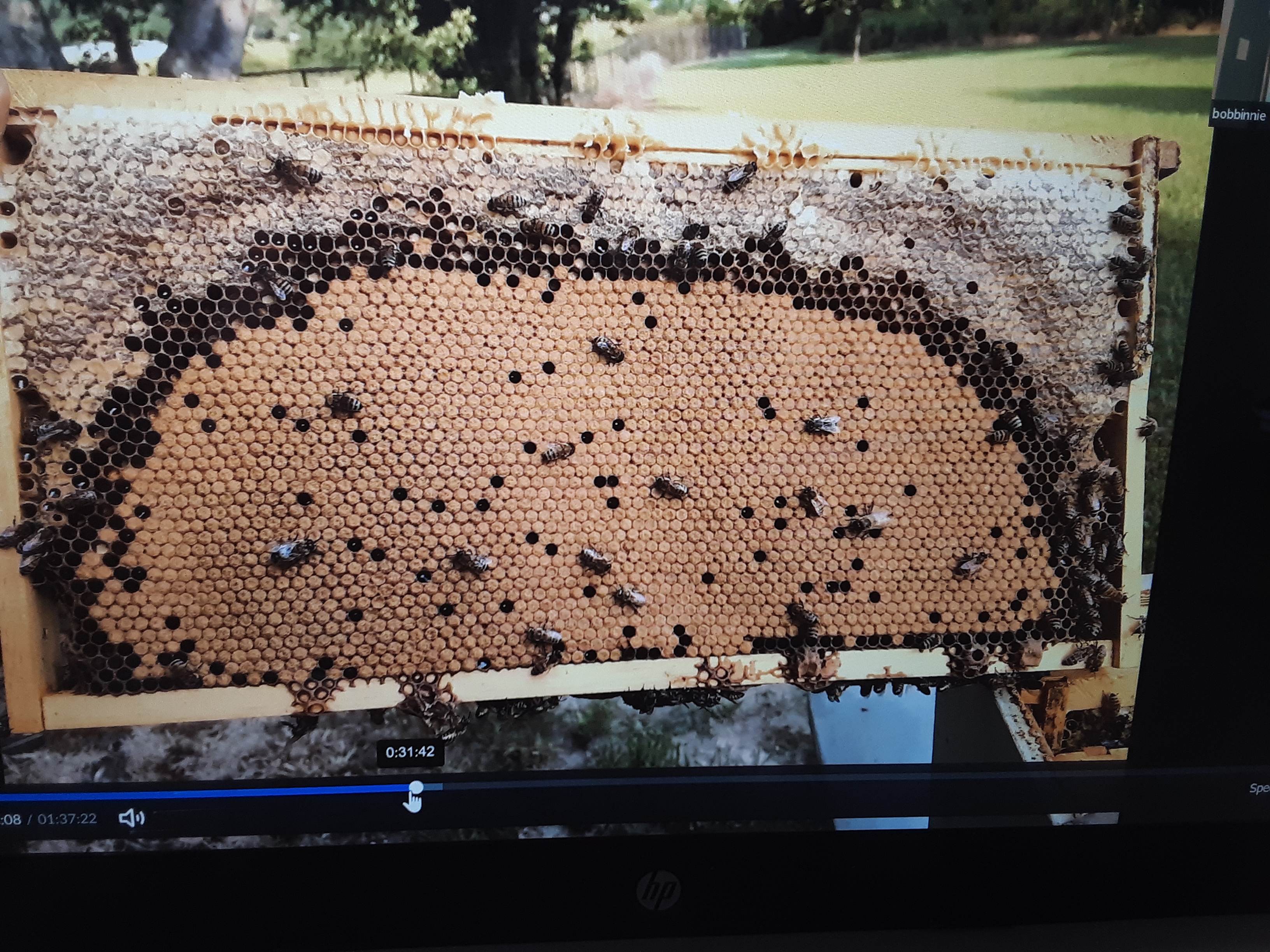Swarm cluster bivouac sighted; swarm leaving colony
Swarming is colony reproduction. In swarming behavior, the queen lays fertilized eggs in several to many queen cups, often those on the margin of frames or comb, over a several day period, leading to several to many developing swarm queen cells.
In contrast, in supersedure, fewer eggs are placed in queen cups, with cups selected from the face of comb.
As the queen cells develop, the queen reduces egg laying and begins to lose body weight, eventually losing up to half her body weight. Preparations occur over two to three weeks.
Swarm emergence with the original queen is anywhere from one to two days prior to virgin queen emergence from cappedcapping:
the covering that bees add over comb cells containing fully ripened honey or to cap brood that has reached the pupal stage; bee bread cells are not capped swarm queen cells, though it might be earlier or may be delayed until several queens, ready to emerge, are imprisoned in their cells. A queen must emerge from her colony and join the bivouac swarm cluster in successful swarming.
swarm queen cells, though it might be earlier or may be delayed until several queens, ready to emerge, are imprisoned in their cells. A queen must emerge from her colony and join the bivouac swarm cluster in successful swarming.
The swarm itself is a temporary bivouac cluster of bees that left their parent colony along with the original queen. Scout beesscout bees:
worker bees that search for pollen, nectar, water, propolis and, during swarming, suitable nesting sites
leave the cluster to search for a new homesite. Beekeepers frequently capture swarms to establish a new hive. Capturing a swarm is how many beekeepers begin beekeeping.
Rearing queen cells in supersedure or emergency queen cells; swarm leaving colony resembles heavy orientation flights initially, but swarm flight is compact and soon moves away from colony entrance.
Grozinger C, Roberts J and Mattila HA. 2013. From molecules to societies: Mechanisms regulating swarming behavior in honey bees (Apis spp.) Apidologie 45(3): 327-346. https://link.springer.com/article/10.1007/s13592-013-0253-2
Burlew R. 2023. How to know a swarm cell from a supersedure cell. Honey Bee Suite. Accessed 2023. https://www.honeybeesuite.com/is-it-a-swarm-cell-or-a-supersedure-cell/
Moore P. 2015. Honey Bee Queens: Evaluating the Most Important Colony Member. Bee Health. Accessed 2023. https://bee-health.extension.org/honey-bee-queens-evaluating-the-most-important-colony-member/
Collison C. 2018. A Closer Look: Swarming Behavior. Bee Culture. Accessed 2023. https://www.beeculture.com/a-closer-look-20/
“a Quick and Simple Trick to Saving Small Honey Bee Hives”. YouTube, uploaded by a Canadian Beekeeper’s Blog, 19 January 2019. https://www.youtube.com/watch?v=YQQSVIACyrU
Schneider SS. 1990. Queen Behavior and Worker: Queen Interactions in Absconding and Swarming Colonies of the African Honey Bee, Apis mellifera scutellata (Hymenoptera: Apidae). Journal of the Kansas Entomological Society 63(1): 179-186. https://www.jstor.org/stable/25085159
Apis Enterprises. n.d. Swarming and Absconding. Apis Information Resource Center. Accessed 2023. https://beekeep.info/a-treatise-on-modern-honey-bee-management/managing-honey-bee-populations/swarming-2/